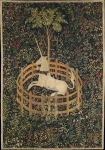
Last month I promised I would post about the Unicorn Tapestries that hang in The Cloisters (see my post Cloister Me). They have special meaning for me. I first saw them as a freshman in high school on a field trip. And they figure largely in the mystical fantasy I am writing, about a high school freshman who is uniquely impacted by seeing the Unicorn Tapestries while on a field trip to The Cloisters (any similarities between this character and, um, any living person is strictly a coincidence).
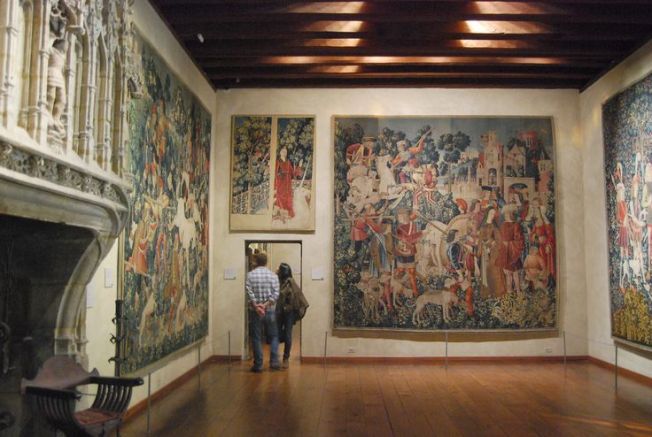
Picture found on http://thinkmuseum.wordpress.com/tag/metropolitan-museum-of-art/
Taken together, the tapestries tell an allegory that would have been familiar to medieval audiences. The story is called The Hunt of the Unicorn as an Allegory of the Passion. It begins with a scene of hunters equipped with spears and dogs.
The second tapestry is called The Unicorn is Found. A unicorn dips its horn into a stream flowing out of the fountain. The hunters stand by and watch, as do a group of assorted animals, including lions, pheasants, a hyena, and a deer. According to legend, serpents could release their venom into streams, and any person or animal drinking the water would die. The unicorn purified the water with his horn, making it safe to drink again. Interpreting the allegory, the serpent is Satan, and the venom is sin. Anyone who partakes of it dies. The unicorn is Christ. He purifies the stream, counteracting sin, and restores life. Because of this legend, unicorn horn was a highly sought-after prize in the middle ages, and royal families reportedly owned them. Wealthy nobles might have a piece of one. They were used at the table to purify food and drink, since poison was a fairly common means of murder in those days. (Click on the images below for a larger view.)
The next tapestry is called The Unicorn Leaps out of the Stream. The unicorn is surrounded by hunters with spears drawn, tormenting him, just the Roman soldiers beat and mocked Christ. Then in the next tapestry, The Unicorn at Bay, the attacks escalate, and the fierce unicorn fights back.
The next tapestry, The Mystic Hunt of the Unicorn, is parenthetical to the story, and is partially destroyed. The two fragments that remain show the unicorn being attacked by dogs in a fenced garden. At his side is a woman who appears to be signaling a hunter standing a short distance away. This is addressing another legend about the unicorn, that it is so fierce it can only by tamed by a virgin. In the allegory, the hunter is the angel Gabriel, by whose announcement the unicorn (Christ) succumbs to Mary and becomes incarnate. The woman we see, however, in not Mary. The portion of the tapestry showing Mary is gone. If you look carefully at the unicorn’s neck, you can see Mary’s fingers caressing his mane, and her sleeve below the unicorn’s goatee.
The unicorn is pictured twice on the tapestry called The Unicorn is Killed and Brought to the Castle. In the upper left hand corner he’s being stabbed with the hunters’ spears and bitten by their dogs; in the center, he’s dead and hanging over a horse’s back.
Finally my favorite tapestry, The Unicorn in Captivity. The unicorn, alive but wounded, sits corralled within a little fence. This is the quintessential depiction of a unicorn, probably familiar to everyone.
When the Bible was being translated into English from 1604-1611 (known as the King James Version), the scholars didn’t know how to translate the Hebrew word reym. As far as they could tell, it was a swift, fierce, horned animal. That suggested a unicorn to them. The word appears nine times in the KJV. Subsequent translations say “wild ox” in its place.
Did the unicorn ever really exist? Sightings of unicorns have been documented going back to the third century B.C. If you search on YouTube, you can find dozens of cheesy videos of unicorn sightings along with the UFOs, chupacabra, and bigfoot. Unicorns appear in the historic household inventories of royal families all over the world. Who knows? But isn’t it interesting it was such a pervasive theme in old literature and art? And so beautifully crafted in the legendary Unicorn Tapestries.
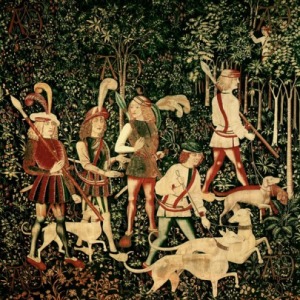



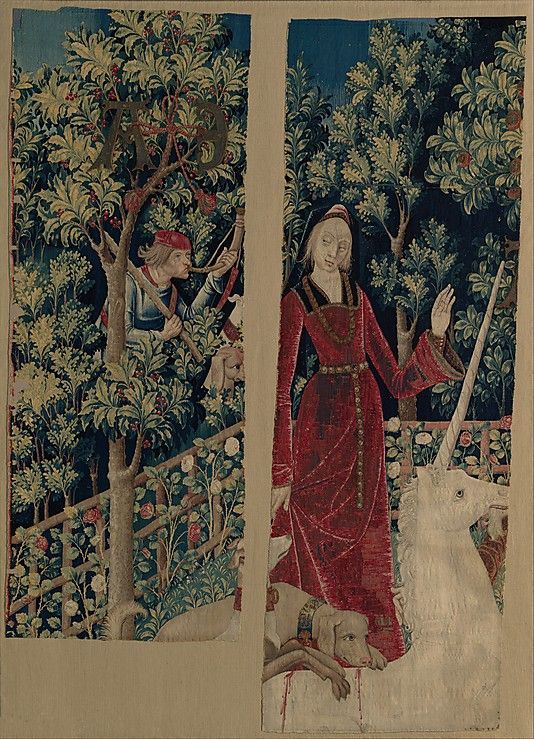

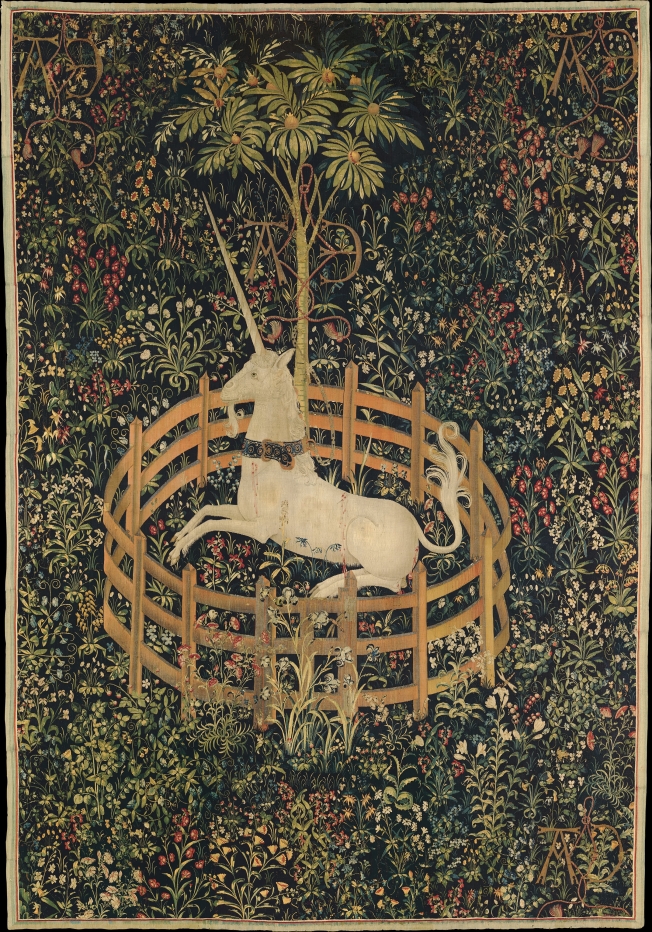
I loved seeing these tapestries after hearing you talk about them and reading your novel…beautiful post!
LikeLiked by 1 person
Reblogged this on ARHtistic License.
LikeLike